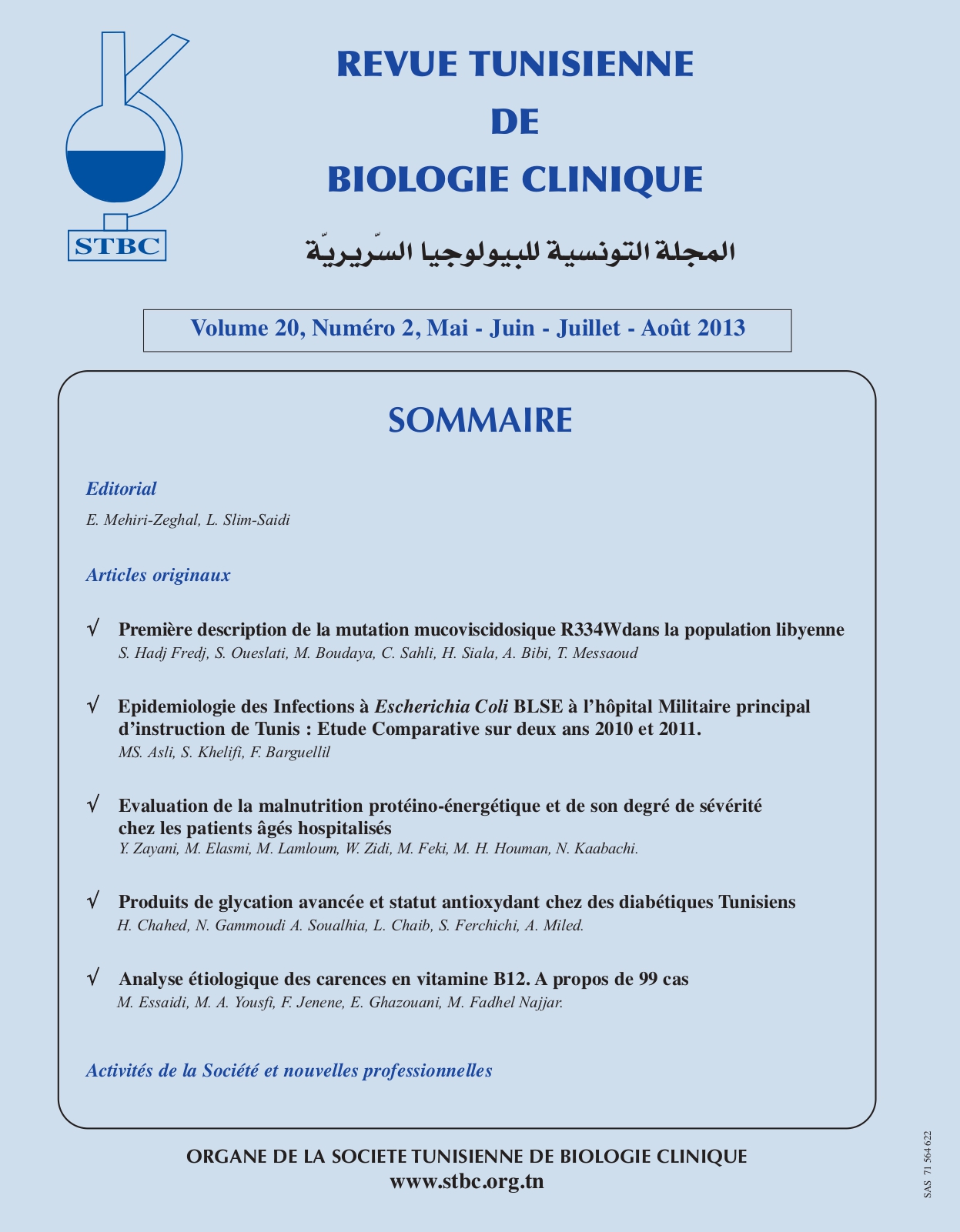Abstract
Escherichia coli is the organism most involved in infectious diseases as well as in hospitals and in town, and is characterized by its ability to acquire antibiotic resistance mechanisms such as extended-spectrum
beta-lactamases (ESBL). Our retrospective study covers all strains of E. coli including producing ESBL isolated in microbiology department of HMPIT in January 2010 to December 2011. The results show that of 896 E. coli, 100 are secreting ESBL in 2010 and of 1045 strains, 108 were ESBL secreting for 2011. Most E. coli strains were isolated from urine at a rate of 87, 9% in 2010 and 89, 2% in 2011. ESBL strains were isolated from the urine with 57% in 2010 and 86, 1% in 2011. More than half of the strains of E. coli (55, 8% in 2010 and 57% in 2011) were isolated from patients outside consultants. For E. coli ESBL, the majority of strains were isolated for both 2010 and 2011, in the intensive care units (53% and 43.5%). During the two years of study, more than 60% of E. coli strains are resistant to amoxicillin and ticarcillin. Amikacin and gentamicin retain good activity with 85% sensitivity and 90% in 2010 and 2011. Resistance is 26, 4% to nalidixic acid in 2010 and 27, 8% in 2011, while 22, 6% and 20% in 2010 and 14.7% in 2011 and 13.6% of the strains were resistant respectively to ofloxacin and ciprofloxacin. For E. coli ESBL resistance to all betalactams except cefoxitin and imipenem was observed. In fact, 87% and 100% of isolates in 2010 and 88.9% and 100% of strains in 2011 are respectively sensitive to cefoxitin and imipenem. Resistance to gentamicin and amikacin exceeded 74% in 2010 and reached 77% in 2011. For fluoroquinolones, most strains are resistant (over 60%). We are witnessing in recent years rapid emergence of community strains of E. coli ESBL-producing. The consequences of their diffusion are clinical, environmental and financial. A better understanding of the epidemiology of resistance will improve the therapeutic management of patients while reducing the prescription of broad spectrum antibiotics.

This work is licensed under a Creative Commons Attribution 4.0 International License.
Copyright (c) 2013 Revue Tunisienne de BIOLOGIE CLINIQUE

